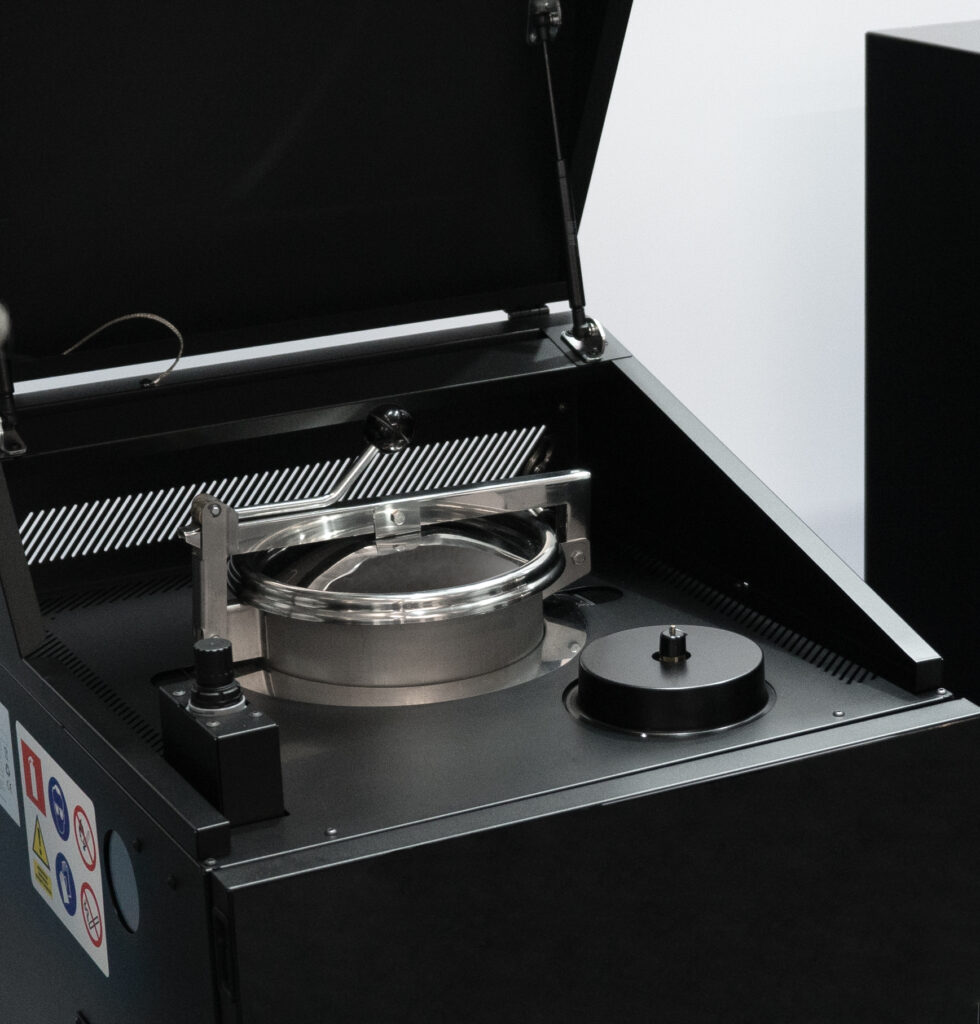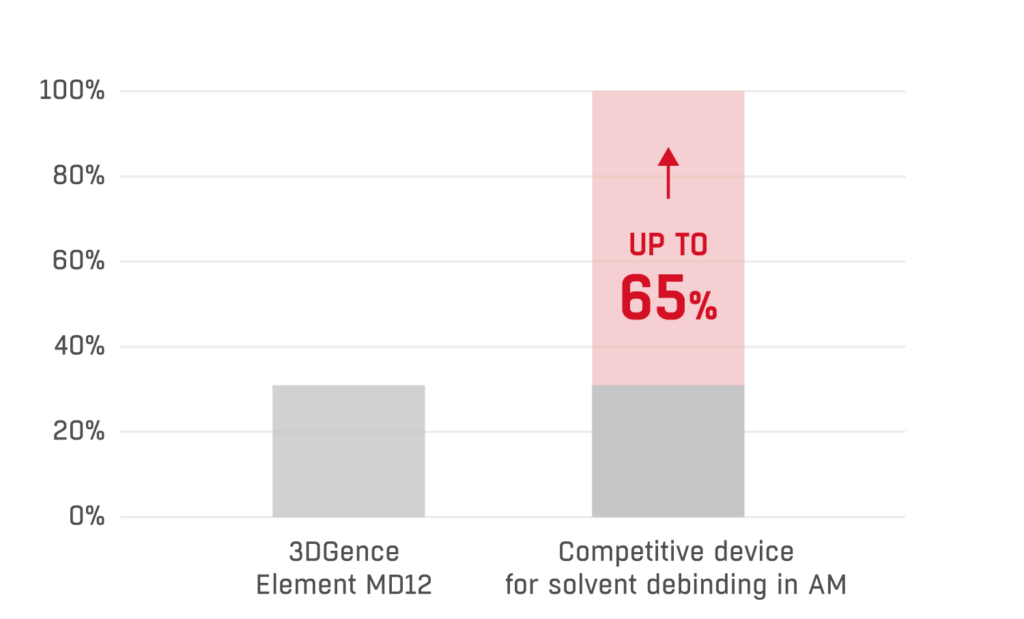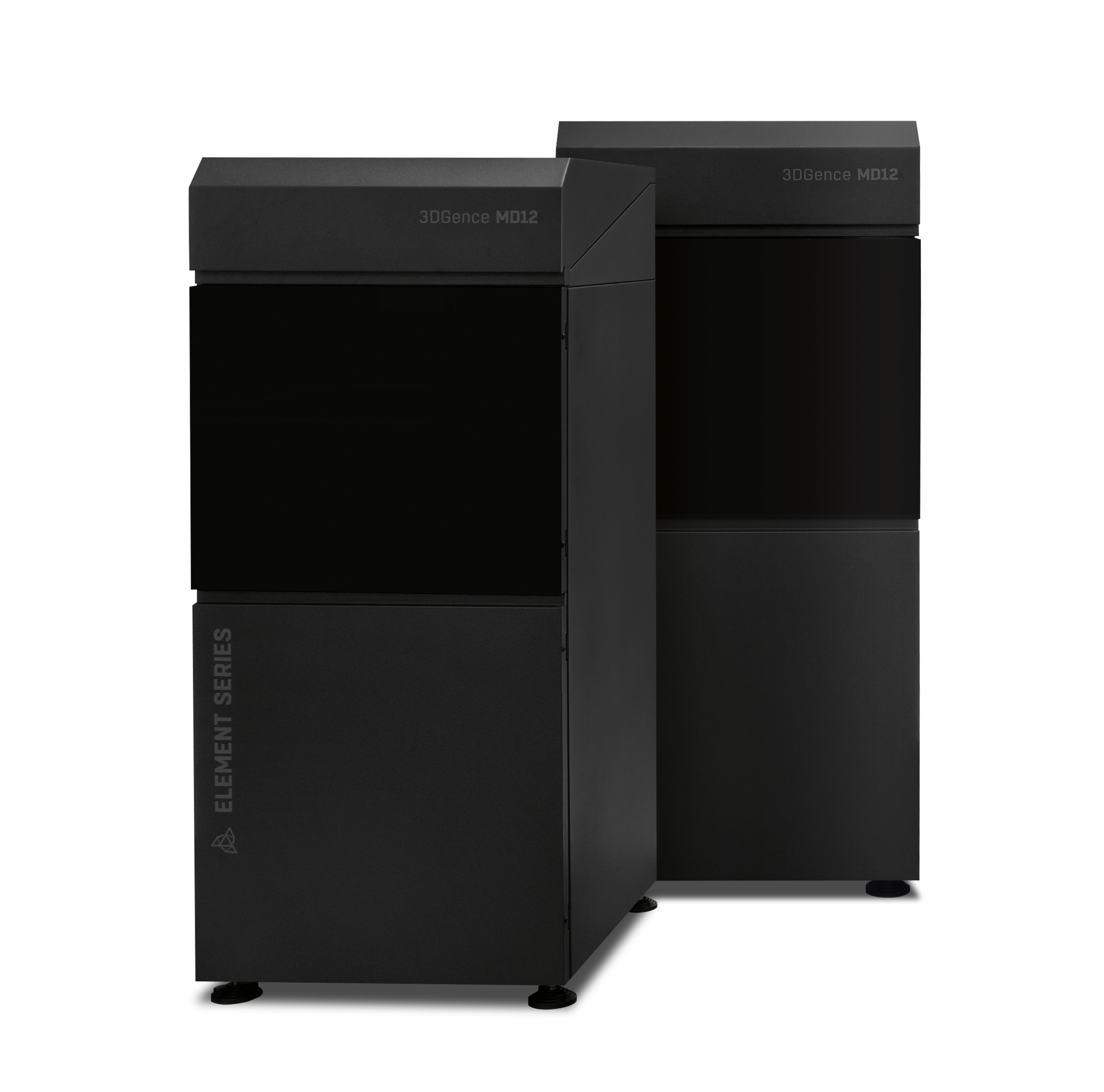The 3DGence ELEMENT MD12 device is a cost-effective solution for solvent debinding in additive manufacturing of metal parts, specifically designed to work with wax-based binder systems.
The debinding process in powder metallurgy technologies involve four distinct types of binders that vary based on the method employed for their removal.
First type of debinding is thermal debinding – the process happens exclusively within furnaces, which may later be utilized for sintering. Thermal debinding may exhibit lower efficiency compared to solvent debinding, and this method often induces significant stress in the processed parts.
Another variant, catalytic debinding, offers the fastest debinding process while enabling the utilization of mixtures with high powder content. However it is essential to note that the gasified compounds utilized in this process can pose potential hazards. Hence, proper equipment preparation and operator training are imperative for conducting such processes safely.
Yet another alternative are water debinding systems. This process eliminates the need for hazardous organic substances. However, its application is considerably more restricted compared to solvent debinding, as it is limited to specific materials due to the use of water, which may react with the metallic powders.
An increasingly popular binder system involves combining organic solvent-soluble waxes and fats (primary binder) with a thermoplastic backbone (secondary binder). The solvent is employed to extract the primary binder, creating pores that enable the subsequent removal of the secondary binder through pyrolysis. Solvent debinding is an exceptionally versatile process suitable for a wide range of metal and ceramic powders, as well as diverse binder systems.

ELEMENT MD12 is an industrial device specifically designed for the extraction of primary organic binders using the solvent method from parts produced using additive technologies involving binders as well as parts manufactured by MIM technology.
The 3DGence ELEMENT MD12 device stands out as the most cost-effective industrial solution available for solvent debinding processes, ensuring full compliance with ATEX regulations and enabling the recycling of saturated solvents. With comprehensive functionality and a sleek modern design, the device encompasses all the essential features required for the debinding process.

By incorporating an enclosure functioning as a ventilation box, the ATEX zone is effectively confined to the device, eliminating the requirement for extensive modifications to the installation space. The only necessary adjustments entail providing a 16A, 250.0V power connector in the form of a 2P+E Female CEAG Surface mounting IP66 outlet and connecting the device to a dedicated gas extraction system. The extraction system should be separate from the ventilation system and equipped with an ATEX certified fan, adhering to the guidelines specified below:
The device complies with the ATEX 2014-34/UE Directive of the European Parliament and of the Council of February 26, 2014, and bears the marking: II -/2G Ex h IIA T2 -/Gb
The device provides extensive versatility, catering to a wide range of applications. It can effectively operate with various commonly used organic solvents, enabling debinding processes for both low-volume MIM manufacturing and diverse additive metal printing technologies (such as binder jetting, filament/pellet extrusion based technologies, and CMF printing method) that employ solvent binder removal as the primary debinding method.
The flexibility of solvent debinding processes stems from the ability to utilize different organic substances as solvents. Consequently, the device is suitable for a multitude of binder systems, accommodating various metallic and ceramic materials based on their solvent resistance capabilities.
In light of growing environmental requirements for businesses and the continuously escalating costs of chemical disposal, minimizing solvent usage has become important. The 3DGence ELEMENT MD12 facilitates solvent distillation and enables the use of the recovered solvent in subsequent processes. This approach not only addresses environmental concerns but also helps mitigate the high handling costs associated with chemical disposal.

Necessary cookies are absolutely essential for the website to function properly. This category only includes cookies that ensures basic functionalities and security features of the website. These cookies do not store any personal information.
Cookies that are used to recognise you and remember your preferences or settings when you return to our site, so that we can provide you with a more personalised experience.
Cookies which measure how often you visit our sites and how you use them. We use this information to get a better sense of how our users engage with our journalism and to improve our sites and apps, so that users have a better experience.
Cookies that are used to collect information about your visit to our site, the content you have viewed, the links you have followed and information about your browser, device and your IP address.